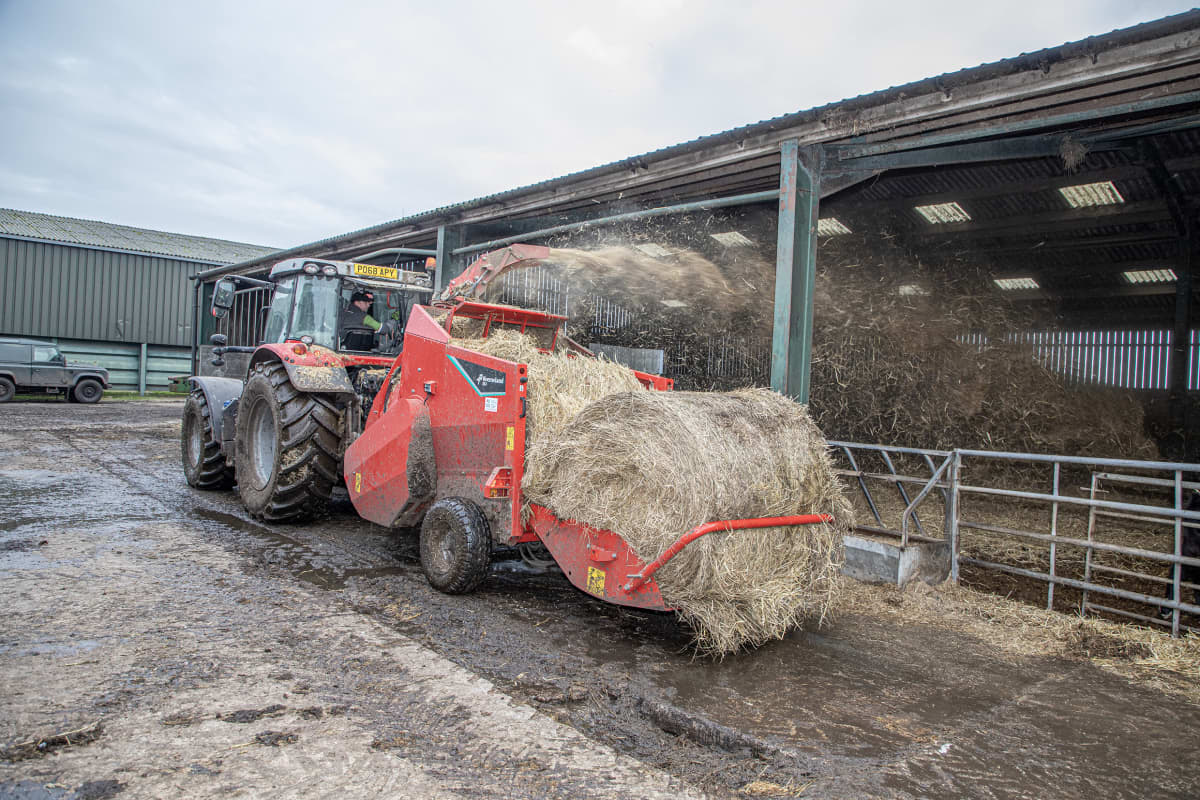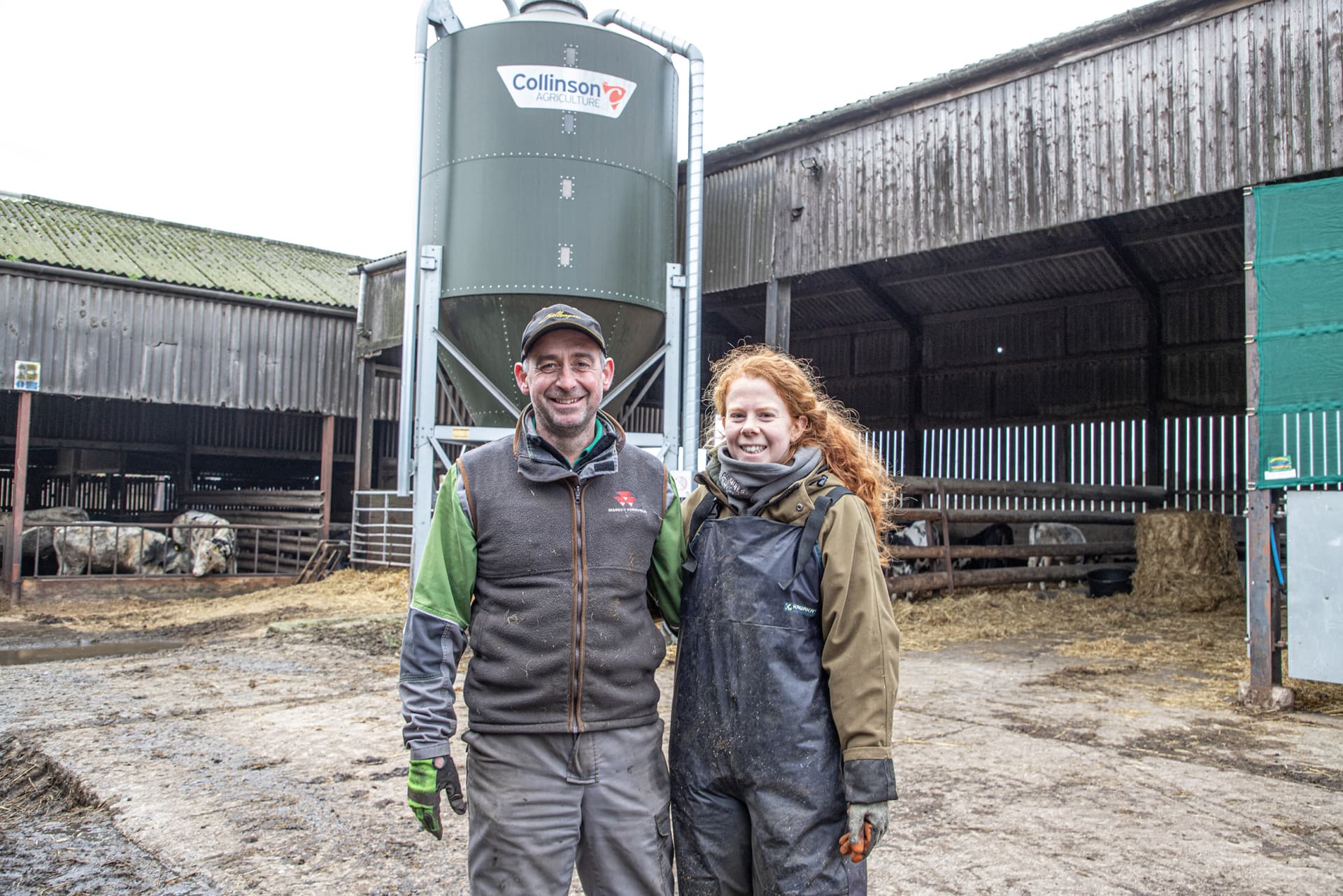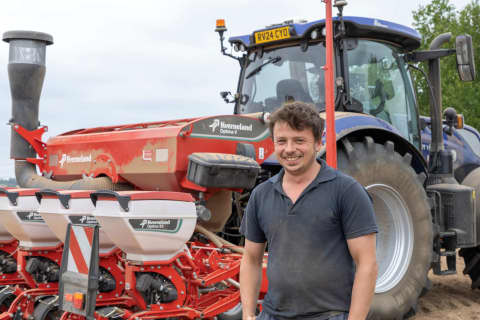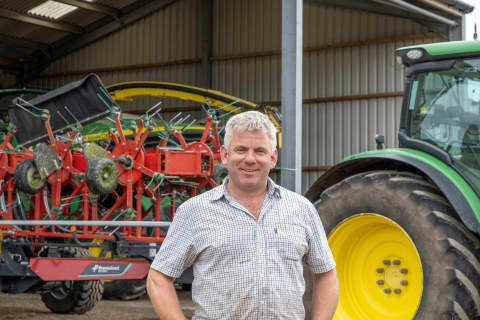Her opinions often make it onto Instagram and other social media platforms, as she provides an insight into her life on the family-run farm.
“I was very glad to try this one out, as our old Kverneland bedder had become a bit temperamental after 10 years of use and abuse,” explains Amy. “And over a week’s test, we saw such an improvement with the new Kverneland 863 bale chopper, that I persuaded Dad to buy a new one.” With around 600 head of beef to feed and bed on a daily basis through the winter months, the Wilkinsons are kept busy. Any unwanted breakdowns mean lost time and reduced efficiency.
“We shred around 16 round bales/day, blowing the chopped straw into the pens, and it’s the sort of kit that you rely on – it needs to work,” she says. “We don’t feed with it – but it has to spread straw well, so we can make the most of our wheat straw.” Amy noted that compared to the older version, this newer 863 model is a lot more powerful, with a wider spout and a more open intake to keep straw flowing through the rotor. “The Kverneland 863 is definitely a massive step up and a vast improvement all-round,” says Amy. “Our bales are stacked outside, which means we get our fair share of wet straw to deal with.” “And we could block the old machine quite easily with wet bales, where this one just seems to eat its way through straw without struggling,” she adds. And it’s a point that Dad David agrees with.

“It’s a far superior machine,” explains David. “External controls are easy to use, and that is really helpful for us when loading two bales into the bed.” “This model also has a stronger six-stud axle which is better at carrying two wet round bales, plus there’s a wider, stronger spout and the ability to blow straw further, at lower revs,” he says. “We’ve not blocked it yet.”




